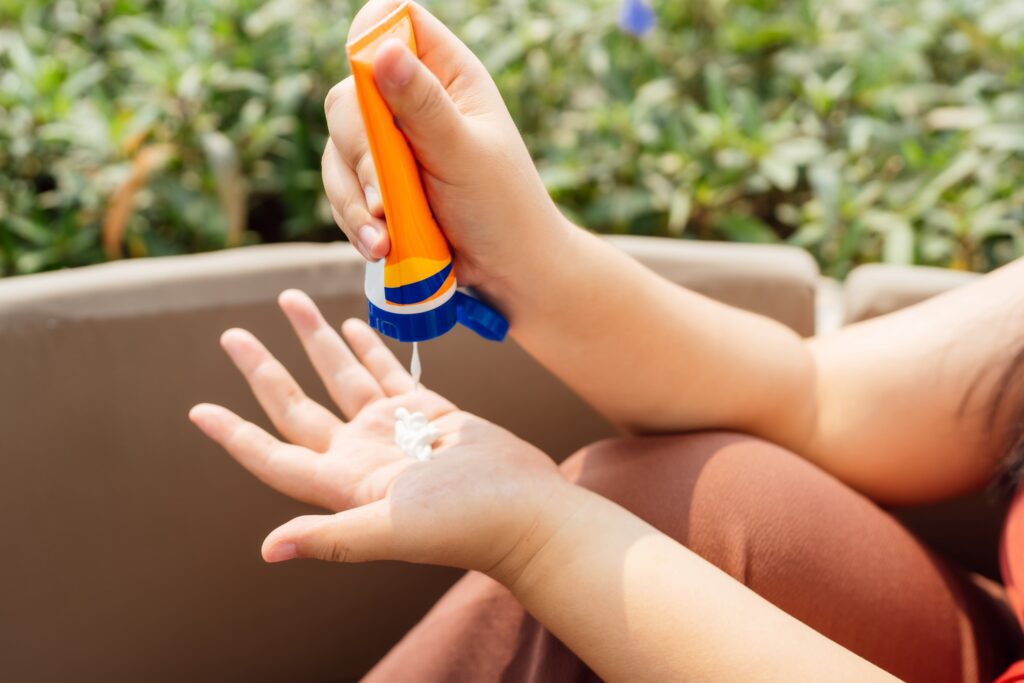Skin cancer is one of the most common types of cancer, but it’s also one of the most preventable. Taking proactive steps to protect your skin can significantly reduce your risk of developing skin cancer. Here are skin cancer expert Dr. Adam Mamelak‘s top five ways to prevent skin cancer:
1. Use Sunscreen Daily
Why It’s Important:
Sunscreen is your first line of defense against harmful UV rays, which can cause skin damage leading to cancer.
How to Do It:
- Choose a broad-spectrum sunscreen with an SPF of 30 or higher.
- Apply generously to all exposed skin, including your face, neck, ears, and the back of your hands.
- Reapply every two hours, or more often if swimming or sweating.
Dr. Mamelak’s Tip:
Use a water-resistant sunscreen if you’re going to be swimming or sweating, and don’t forget to apply lip balm with SPF.
2. Seek Shade During Peak Hours
Why It’s Important:
The sun’s rays are strongest between 10 a.m. and 4 p.m. Staying in the shade during these hours can significantly reduce your UV exposure.
How to Do It:
- Plan outdoor activities for early morning or late afternoon.
- Use an umbrella, tree, or shelter for shade.
- Carry a portable shade structure if you’re spending the day outdoors, such as at the beach or park.
Dr. Mamelak’s Tip:
Even in the shade, UV rays can reflect off surfaces like sand, water, and concrete, so continue to use sunscreen.
3. Wear Protective Clothing
Why It’s Important:
Clothing provides a physical barrier against UV rays, reducing your exposure.
How to Do It:
- Wear long-sleeved shirts, long pants, or skirts made from tightly woven fabric.
- Opt for dark or bright colors, which offer better protection than light colors.
- Consider clothing with a UV protection factor (UPF) label.
Dr. Mamelak’s Tip:
Don’t forget to wear a wide-brimmed hat to protect your face, ears, and neck, and UV-blocking sunglasses to protect your eyes.
4. Avoid Indoor Tanning
Why It’s Important:
Tanning beds and sunlamps emit UV radiation that can increase your risk of skin cancer.
How to Do It:
- Embrace your natural skin tone and avoid tanning beds altogether – pale doesn’t have to mean pasty!
- If you want a tanned look, consider using a self-tanning product or spray tans.
Dr. Mamelak’s Tip:
Many self-tanning products now include moisturizers and SPF, giving you a sun-kissed look without the harmful effects of UV exposure.
5. Regular Skin Exams
Why It’s Important:
Early detection of skin cancer greatly increases the chances of successful treatment.
How to Do It:
- Perform monthly self-exams to check for new or changing moles and spots.
- See a dermatologist annually for a professional skin exam, or more frequently if you have a history of skin cancer or significant risk factors.
Dr. Mamelak’s Tip:
Use a mirror to check hard-to-see areas, and ask a partner or friend to help with areas like your back. Take note of any changes and report them to your dermatologist immediately.
Conclusion
Preventing skin cancer involves a combination of daily habits and periodic checks. By using sunscreen, seeking shade, wearing protective clothing, avoiding indoor tanning, and performing regular skin exams, you can significantly reduce your risk of developing skin cancer. Taking these steps not only helps prevent cancer but also promotes overall skin health and longevity. Protect your skin today for a healthier tomorrow.

